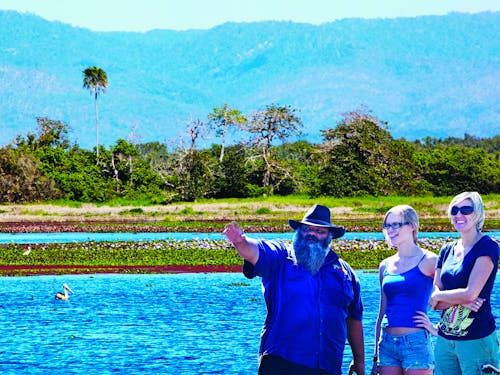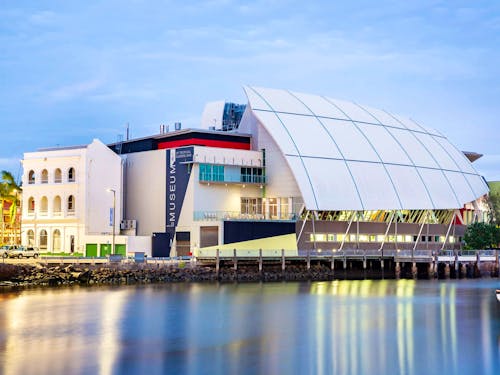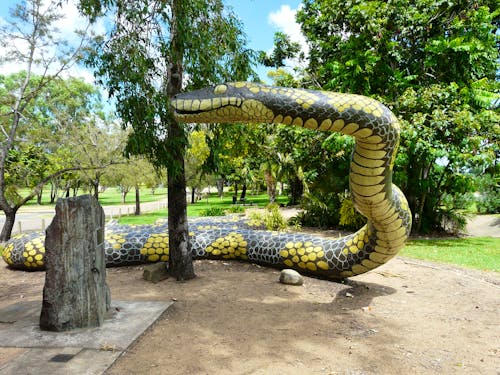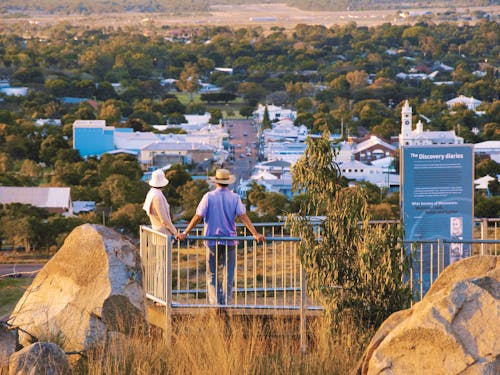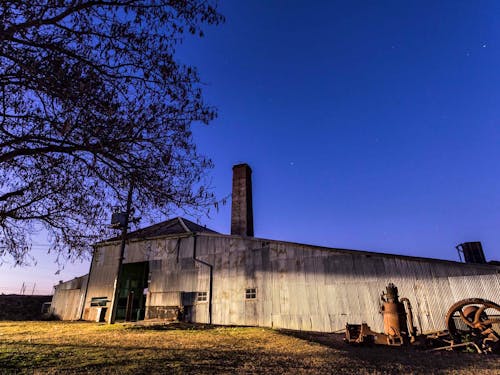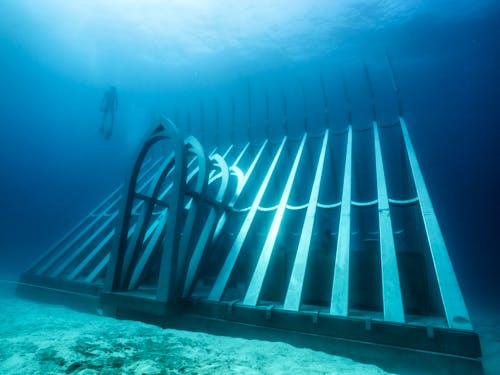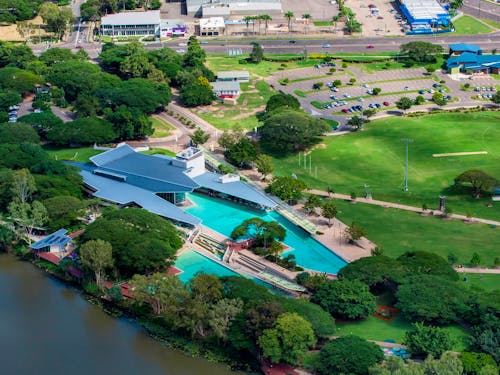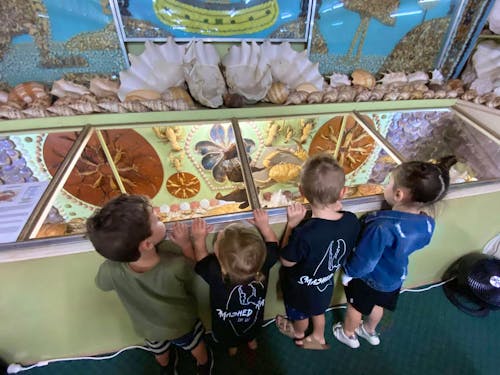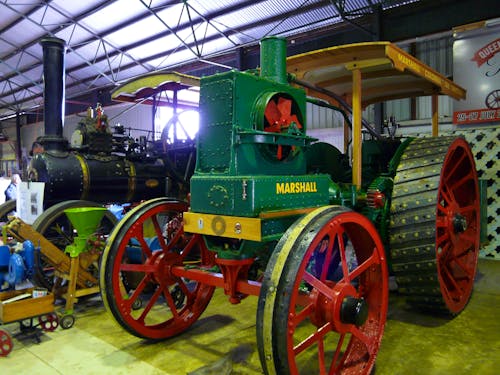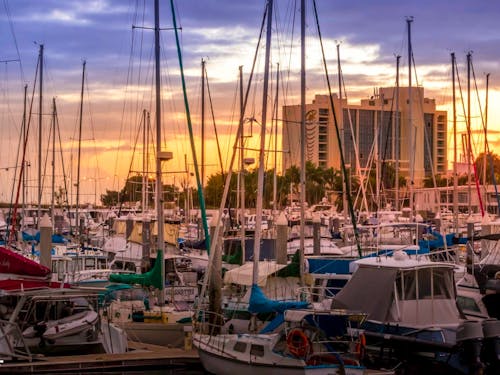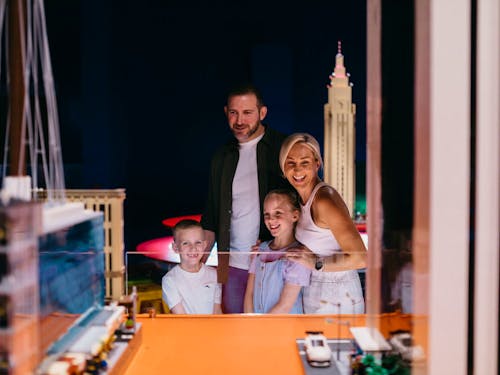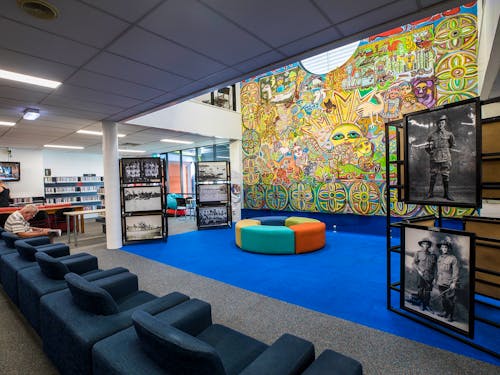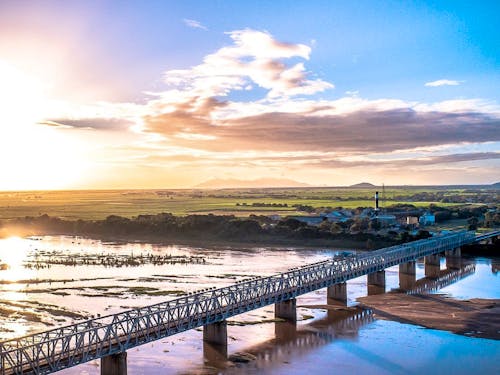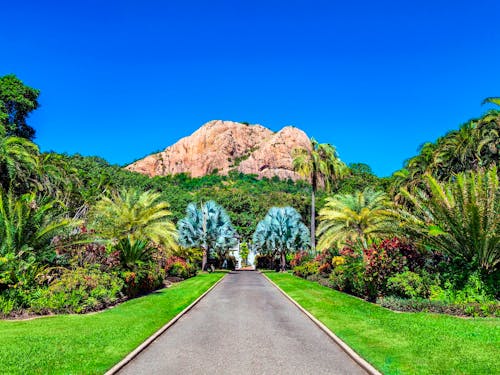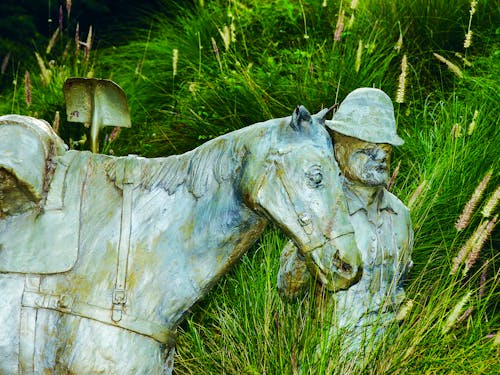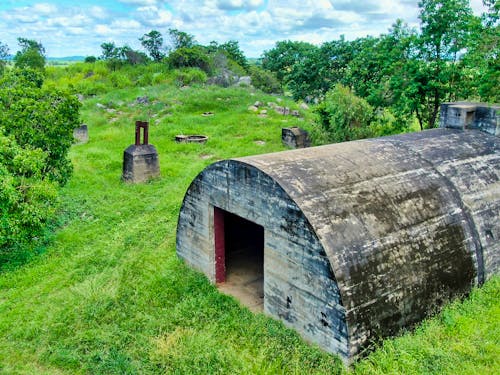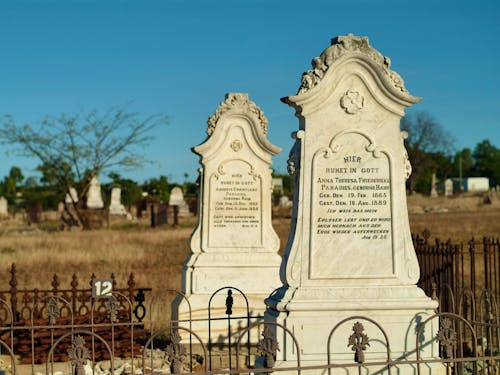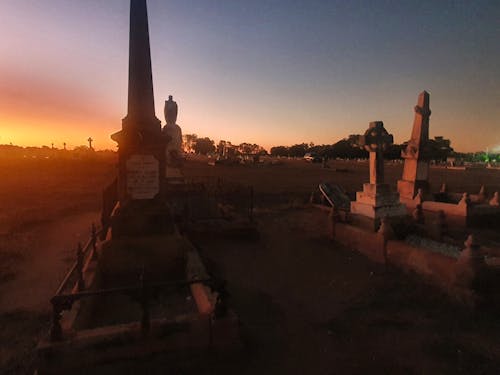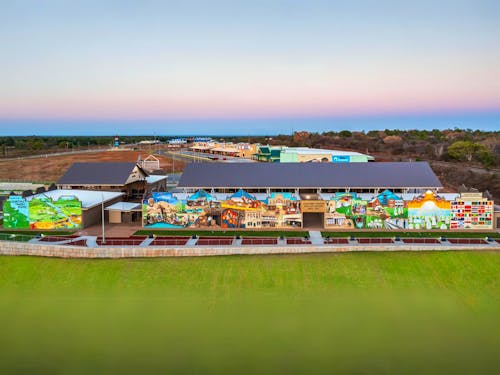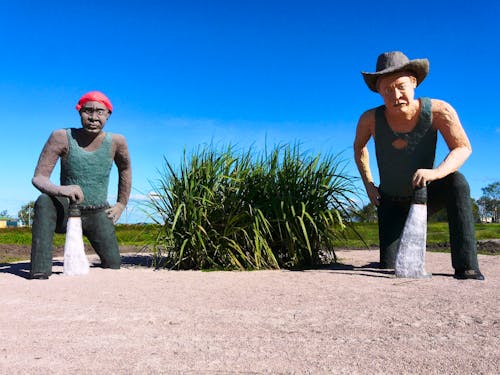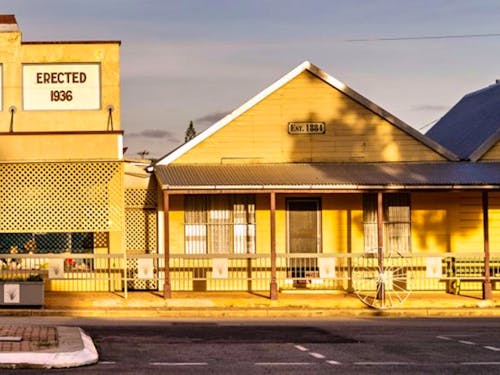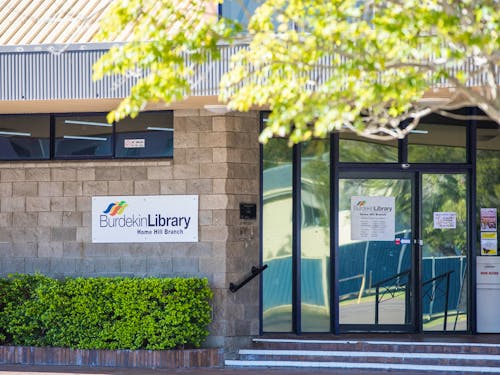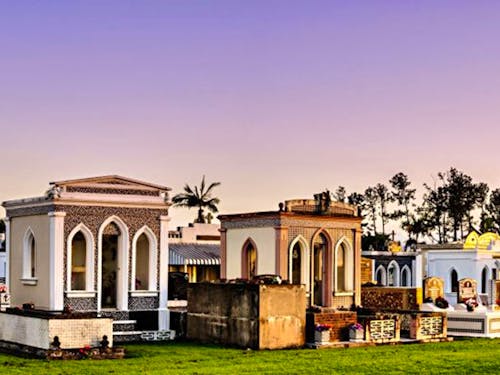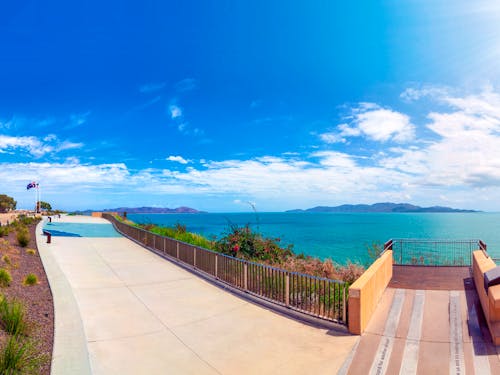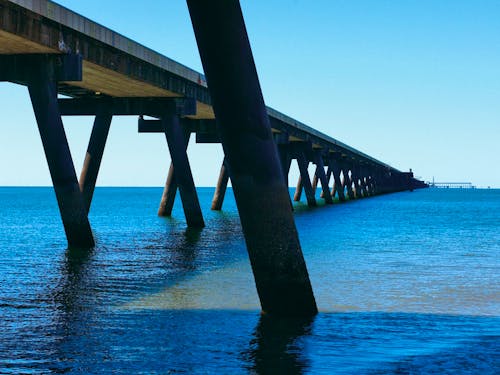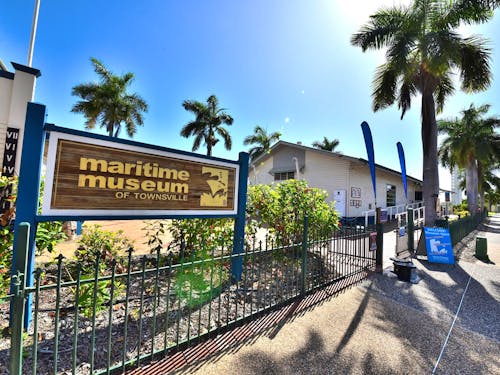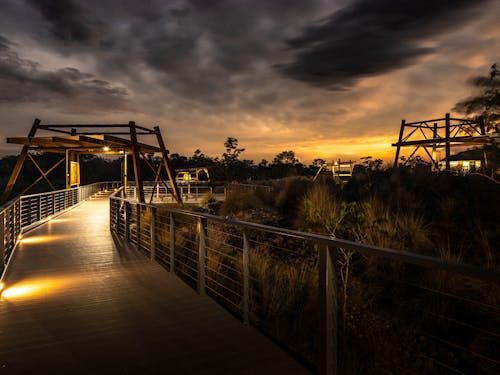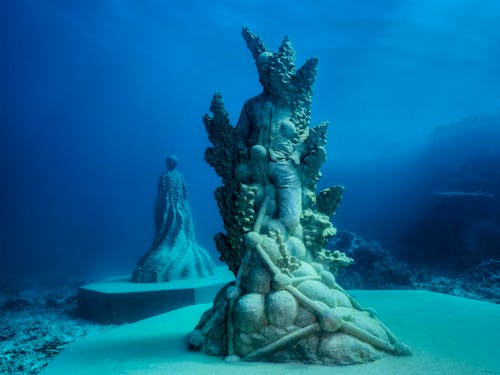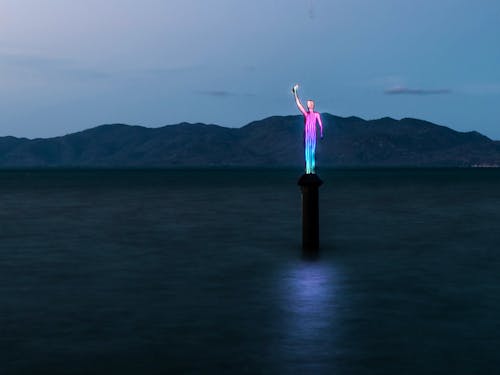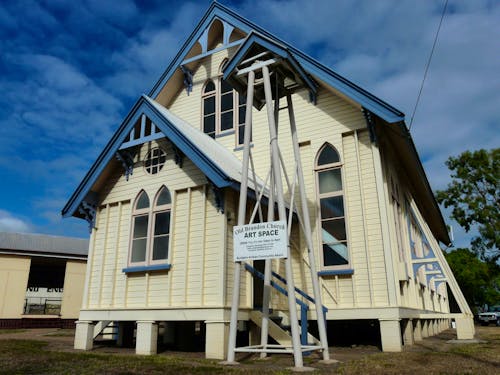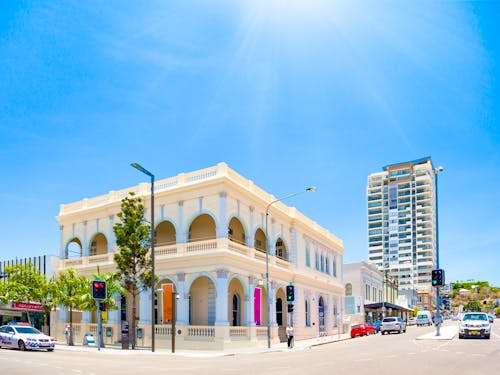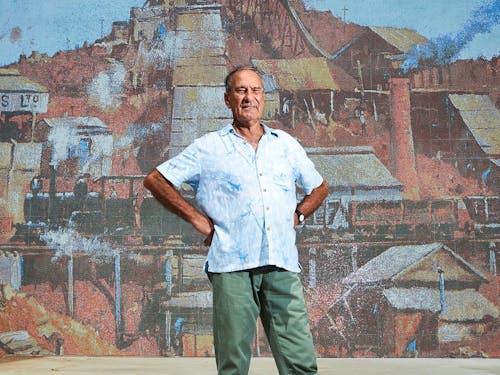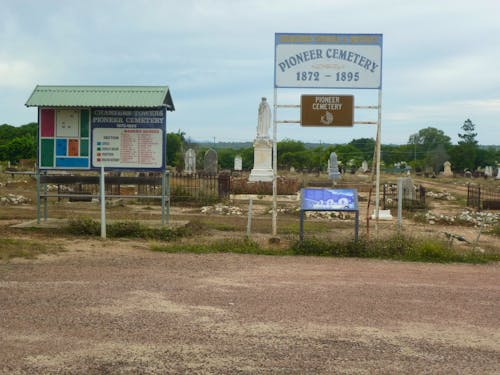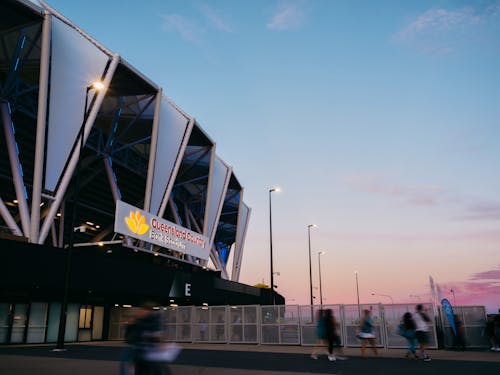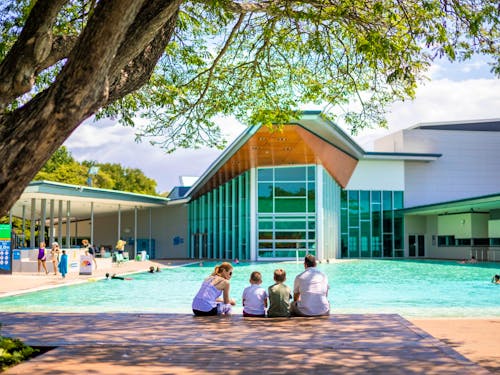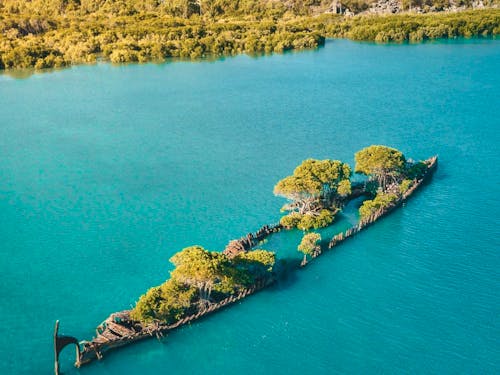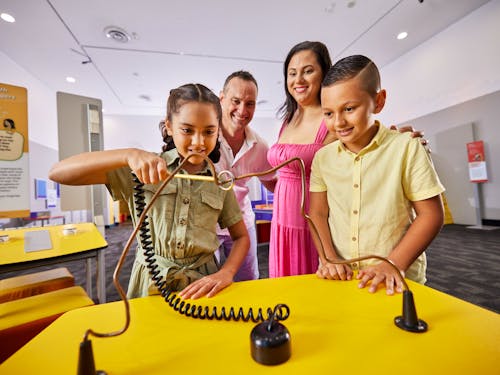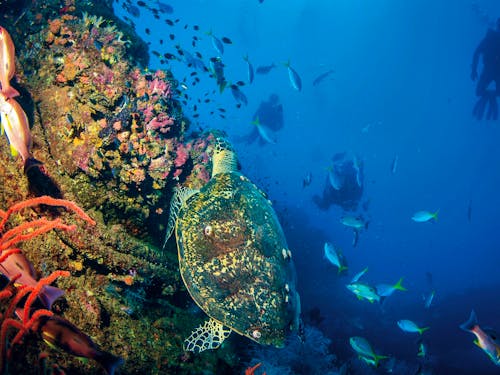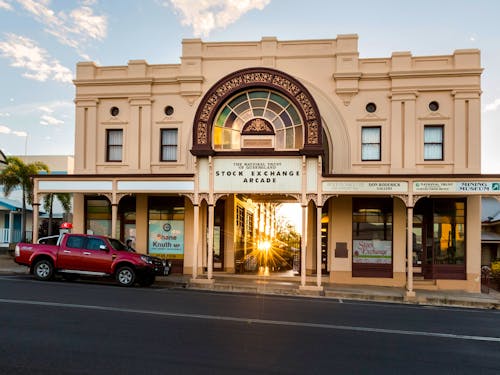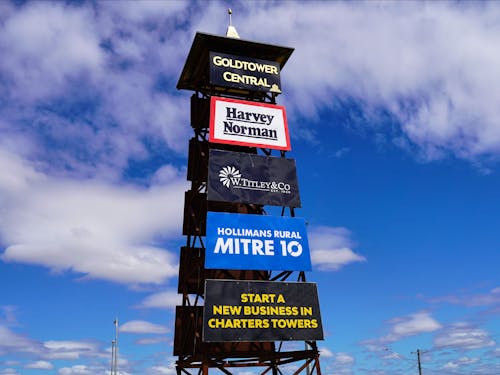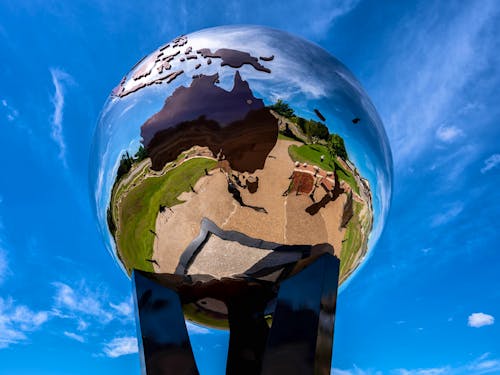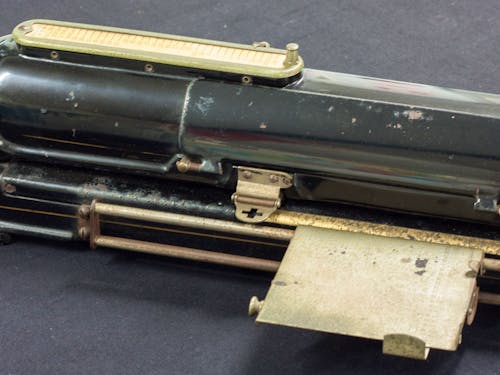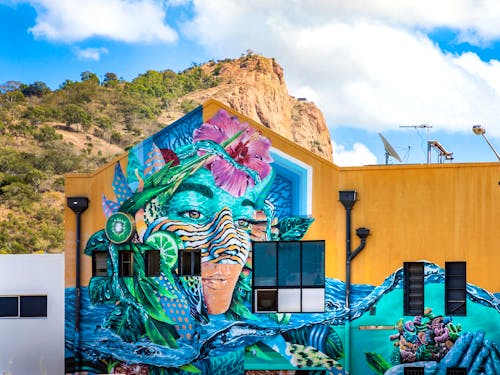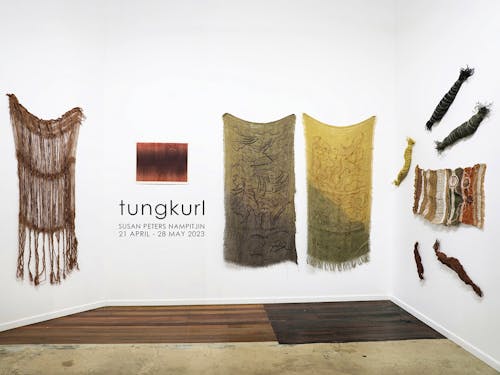
History & Culture
Find things to do
Mungalla Aboriginal Tours
The history and culture of Mungalla tours begins at the grand Mungalla Station homestead where they introduce you to 45,000 years of Nywaigi Aboriginal Culture. Hear their stories and learn to throw a boomerang or spear. Then board the bus for a short trip to the original homestead site where they'll introduce you to Irish settler James Cassady and his family who were the first European settlers on Mungalla and advocated for Aboriginal people and allowed their ancestors to remain on their traditional lands. As you view the remnants of the original Mungalla site hear the pioneering stories of these settlers and let your thoughts drift back in time and consider the glory of old Mungalla. Return to the homestead to experience the truly amazing Captive Lives story that documents the unbelievable story of Aboriginal people displayed as human curiosities throughout the circuses of Europe and America. This amazing exhibition toured nationally and was seen by over 300,000 Australians. Interact with Aboriginal people as they share this wonderful story with you. Add their optional eco-tourism package to your tour where they show you their efforts to regenerate their wetlands and save endangered species. Group tours a speciality.
Learn More Book NowQueensland Museum Tropics
Queensland Museum Tropics delivers a snapshot of North Queensland with galleries telling the stories of World Heritage-listed rainforests, reefs and the tragic tale of HMS Pandora, the ship sent to capture the Bounty mutineers. Located in the heart of Townsville, the museum also explores life in the tropics from prehistoric times to the modern-day. The diverse range of exhibitions and displays are designed to captivate audiences of all ages, focussing on natural and cultural history, biodiversity, human science and much more. Relax and refuel waterside by enjoying a coffee, snack or light lunch during your visit at The Galley Cafe. Open daily from 10 am to 2 pm. The Museum Shop showcases a unique range of merchandise, contemporary homewares, jewellery, educational games and toys plus a variety of souvenirs to make your visit a memorable one! Townsville and regional residents receive discounted museum admission. All exhibitions are included with admission. Paid street parking is available outside the museum, and free parking (time limits apply) is available on The Strand, about 200 metres from the museum.
Learn More Book NowGubulla Munda
A popular place in the Burdekin for visitors to take photos is located in Plantation Park, Ayr. The giant carpet snake is an impressive feature, and makes a fantastic backdrop. This 60 metre artwork depicts Gubulla Munda, the Aboriginal totem and the protective spirit for the Birri Gubba people. Gubulla Munda holds sacred cultural and spiritual significance to the Traditional Owners. There are also several plaques and a memorial stone. These mark the remains of Birri Gubba ancestors re-interred at this sacred site. The Gudjuda Reference Group commissioned the large sculpture Gubulla Munda Dreaming, which was constructed in 2004. It was painted by aboriginal artists. The monument was created to celebrate and promote indigenous culture.
Learn More Book NowTowers Hill Lookout and Amphitheatre
Local legend has it that an Aboriginal boy named Jupiter first discovered gold at the foot of Towers Hill in December 1871. Today you can find a monument which depicts the location of the first gold sighting at the base of the hill. From there follow the road and uncover the stories of the Hill from the interesting and informative storyboards along the way which feature "Jupiter's Luck," "The Seismograph Station," and "Clark's Gold Mine." Discover 30 different World War II bunkers, one of which is a restored bunker located approximately half way up the Hill. Another track at the summit leads off to the ruins of the Pyrites Works. Early morning is the best time to discover the wildlife living on and around Towers Hill. You will see several species of macropods such as the Eastern Grey Kangaroo, the Whiptail and the Allied Rock Wallabies. Watch as the Wedge-tailed Eagles hunt their prey. Towers Hill comes to life in the evening with the Ghosts after Dark film screened in the Amphitheatre. Admission fees apply. Tickets can be purchased at the Visitor Information Centre.
Learn More Book NowCharters Towers Venus Gold Battery
A “must-do” experience for visitors to the Towers. The 150-year-old Venus Gold Battery (Mill) crushed ore from the underground mines to extract the valuable gold. Through an amazing audio-visual experience and guided tour, discover how gold was processed during the colourful North Queensland goldrush. On the outskirts of Charters Towers is the oldest and largest surviving Battery in Queensland – the Venus Gold Battery. Built in 1872, this crushing mill provided gold extraction facilities to miners for over a century. The huge “stampers” pounded day and night extracting the precious gold from quartz up until 1973. The Venus Gold Battery can be visited for guided tour experiences, private group tours, educational experiences and as a private venue hire.
Learn More Book NowCoral Greenhouse & Ocean Sentinels / MOUA / Museum of Underwater Art
Dive or snorkel into a world of wonder and explore the Coral Greenhouse and Ocean Sentinels of MOUA, the Museum of Underwater Art at John Brewer Reef off Townsville. Descend into the Coral Greenhouse and its surrounding gardens, a ground-breaking underwater museum by world renowned artist Jason deCaires Taylor. This architectural wonder merges marine science, coral gardening, and art, offering a fresh perspective on the Great Barrier Reef and its ecology. Its surfaces evolve as marine life thrives, ensuring every visit turns into a unique encounter with the reef's dynamic ecosystem. Surface between the Ocean Sentinels, a captivating series of underwater sculptures that blend human figures with marine elements, fusing art and science. Each sculpture pays tribute to a famous marine scientists or conservationists, highlighting their significant contributions to reef protection. The sculptures transform over time, mirroring the reef's ever-changing nature and resilience. Swim among the stunning coral gardens of nearby John Brewer Reef to round off your adventure. This aquatic wonderland teeming with marine life is one of the best places to experience the iconic Great Barrier Reef and an opportunity not to be missed.
Learn More Book NowPinnacles Gallery
Pinnacles Gallery is a dynamic art space committed to offering a diverse exhibition program with a strong community focus. Pinnacles Gallery is located in Townsville's premier Riverway precinct in Thuringowa, providing a perfect backdrop for you to enjoy local and touring exhibitions of visual arts, craft, social history and more. Once you have browsed the latest exhibition, take a swim in Riverway lagoon, stroll along the riverfront under the shade of the large rain trees or catch a performance at the Riverway Arts Centre.
Learn More Book NowAyr Nature Display
The Ayr Nature Display is Australia's finest, preserved collection of butterflies, moths, beetles, crustaceans, seashells, reptiles, rocks, timber, aboriginal stone implements and fossils, especially ammonites, all under one roof. The Ayr Nature Display was conceived and arranged by Jess and Allan Ey. The display was opened to the public in 1966. The experience begins as you walk past feature walls decorated with North Queensland rocks at the front and the entrance of the display. 9,400 slabs cut with a lapidary saw were used. After traversing the entrance, you will walk into an exceptional display of thousands of specimens housed amazingly in a 4.9-metre by 28.4-metre room.
Learn MoreBrandon Heritage Precinct
If you have a passion for machinery or history, a visit to the Brandon Heritage Precinct is a must. This complex serves as the home of the Burdekin Machinery Preservationists, a dedicated group of machinery enthusiasts eager to showcase their collection of machinery, tractors and other items to visitors and locals. The precinct is also home to the John Tait Steam Gallery, the Alf Shand Blacksmith Shop, the Fielding Engine Shed and the Old Brandon Church. The most significant item on display is the 1911 Marshall Colonial tractor, which is the only one of its kind remaining in Australia. Explore the Brandon Heritage Precinct with a guided tour on Mondays (except December) and on Wednesdays and Saturdays (April to September). Entry is encouraged with a gold coin donation. These enthusiasts have a wealth of mechanical knowledge, so don't hesitate to ask lot of questions about their collection.
Learn MoreBreakwater Marina
Conveniently located close to the CBD, adjacent to lush parklands and dining precincts, Breakwater Marina is open seven days a week with a self serve 24-hour fuel wharf. With 325 berths, they cater for long term and short term agreements for boats up to 45 metres. The all-tide easy access fuel wharf dispenses unleaded, low, mid or high-flow diesel, with five kilogram, ten kilogram and block Ice also available. They can even fill/top up your gas bottles and drop them back down to your berth on request. A courtesy car is also available for two hour bookings for their marina guests. 24 hour fuel – cyclone rated – tropical destination – adjacent to parklands and precincts – liveaboards welcome – year-round calendar of events (post COVID19) – vibrant, social community
Learn MoreBrickman Cities: Build the Future
Brickman Cities: Build the Future is an immersive LEGO® CITY experience, created by one of the world’s leading LEGO® brick artists and only LEGO® Certified Professional in the southern hemisphere, Ryan ‘Brickman’ McNaught. This interactive exhibition showcases the life and architecture of some of the world’s most iconic cities: Sydney, Dubai, London, Tokyo, and New York; at three different historical periods of their development. From castles and forts to massive skyscrapers, discover the history of the world’s greatest cities and help create your own cities of the future, in the interactive build zone. There are hundreds of thousands of LEGO® bricks for families and children to build their own cities and unique LEGO® creations! Part WOW factor, part educational, Brickman Cities took Ryan and The Brickman team over 1,500 hours, and 900,000 LEGO bricks to create. Discover the history of the world’s greatest cities and help build the LEGO® Cities of tomorrow at the Brickman Cities exhibition!
Learn MoreBurdekin Library
The Burdekin Library is a welcoming space on the main street of Ayr. Make sure of a wide range of services available including eLearning, eBooks, computers, Smart devices, public Wi-Fi and internet. The Burdekin Library contains two magnificent artworks included in the original building. Visit Burdekin Shire Council's Library Artworks web page to read about the Mirka Mora mural and the stained glass window by Gary Burgess. Library membership is free to all Queensland residents with identification. International and interstate visitors are offered a visitor membership that requires proof of identity and current residency, as well as a AUD25 non-refundable fee. Visitors may borrow 2 items for 4 weeks. Keep up to date with library events via the Burdekin Library Facebook page. Come and explore the library today!
Learn MoreBurdekin River Bridge
The Burdekin River Bridge is the district's best-known landmark. Locally known as the Silver Link, it is a road and rail bridge that also has a pedestrian walkway. The bridge makes an excellent subject for architectural photos or a great location for holiday snaps. Taking ten years to complete, the bridge was opened in 1957. It replaced a low-level traffic bridge and a rail bridge. Remnants of the old rail bridge can be seen just downstream from the Burdekin River Bridge. Visitors wanting to experience walking across the Burdekin River Bridge will need to exit the highway on the Ayr side heading South, find a park near the stairs and walk up to the bridge access from there. Walking across to the other side during the crushing (sugar cane harvesting season) gives you a good view of the sugar cane bins in the holding yard of the Inkerman Sugar Mill. For more detailed information on the Burdekin River Bridge, see the Burdekin Diorama or call into the Burdekin Gateway Visitor Information Centre in Home Hill.
Learn MoreCape Pallarenda Conservation Park
At Cape Pallarenda Conservation Park, catch a stunning coastal view from the headland and visit Queensland heritage listed World War II fortifications on the Cape Pallarenda trails. Nestled in a scenic coastal location amongst open woodland and vine thickets, the historic quarantine station, established in 1915, was initially used to quarantine passengers on incoming ships. During World War II the area became a strategic defence location. Concrete structures were built on the headland in 1943 to protect Townsville and the harbour from raiding enemy ships. American and Australian armies set up camps on nearby beaches and used the Quarantine Station as a hospital. Spend time in the station's historic display centre to find out more about the quarantine days. Then set off on foot or by mountain bike to explore the shared Cape Pallarenda trails. Choose from short strolls to longer hikes or rides to explore picturesque beaches and the forest slopes of Many Peak Range. Enjoy a picnic on the foreshore. Look for wallabies, lizards and many kinds of birds in the woodland.
Learn MoreCastle Hill
Just metres short of a mountain, Castle Hill is the giant pink granite monolith that stands proud in the centre of Townsville - a perfect place for visitors to orientate themselves. Castle Hill offers vehicle access as well as a number of popular walking tracks, which are frequented by more than 2,500 locals a day! The 360-degree views of Townsville at the top are well worth the journey. Be sure to have a camera on hand, particularly for sunrise or sunset as these are photo opportunities that shouldn't be missed. Apart from being an iconic centrepiece for the city and a lookout for spectacular scenic views, Castle Hill has a significant history. The Hill's vantage was used by visiting American soldiers during World War II. According to local legend, the visitors famously offered to demolish the hill and use the rock to build a bridge to Magnetic Island. A World War II observation bunker sits on one corner of the Hill reminding visitors of Castle Hill's military history. Castle Hill facilities include car parking, public amenities, drink fountains and shaded seating to enjoy while taking in some of the best views of the city and across to Magnetic Island.
Learn MoreCentenary Park
Step back in time to the days of the gold rush when you visit Centenary Park in Charters Towers. This popular park space features a gold discovery monument and a collection of sculptures created by Queensland Artist, Hugh Anderson. Make sure you take a picture of the Bat Statue created and designed as part of the 2013 LATTE Exhibition. Centenary Park features an interesting history, with the area first announced for public purposes in 1888. In 1941 the last Gazette Order in Council set aside the area as a reserve for park purposes and named it "Sayers Park" after Robert John Sayers. From the city's very early days, Centenary Park was called "Harvey's Reserve", no doubt because Joseph Harvey, a local butcher, built and lived in "Tower Villa", an old Queenslander style home that still faces out over the north east corner of the Reserve. During 1972 the Park was re-named "Centenary Oval" as part of the city's centenary celebrations. Centenary Park features picnic tables, toilets, gas barbecues, a children's playground, liberty swing, lit walking tracks and is always cool and shady.
Learn MoreCharlie's Hill
Constructed by the RAAF in 1943, the No 211 Radar Station on Charlie’s Hill was one of twenty radar installations along the North Queensland coastline. These operated to give an early warning of approaching enemy aircraft during World War II. When visiting this historic site, igloos of reinforced concrete which provided bomb-proof protection for the radar equipment can still be seen. The wooden towers which supported the transmitting and receiving aerials have been removed. However, foundations from various structures near the igloos may still be found. The buildings are listed in the Queensland Heritage Register because of the site’s historical and military significance. Charlie’s Hill is a six minute drive south of Home Hill. Travelling along the Bruce Highway, look for the signs on the left, just after Iyah Creek. Turn onto Charlie’s Hill Road and travel about 1.5 kilometres, until the hill is visible on the right. The access to the hill from the road is an unsealed track. The site is maintained by the Burdekin Shire Council.
Learn MoreCharters Towers Cemetery
Charters Towers Cemetery was established in 1895. It is the resting place for a number of interesting local characters including Jupiter Mosman who, as local lore has it, was part of the party that discovered gold at Charters Towers; Doctor Leonard Redmond who discovered Australian dengue fever; Fredrick Pfeiffer owner of the rich Day Dawn PC Mine and James Knenniff who was the last bushranger in Queensland. The Charters Towers Visitor Information Centre has the cemetery records for both the Pioneer and Charters Towers cemeteries. If it is family history you are seeking, why not contact the Charters Towers and Dalrymple Archives Group or the Charters Towers Family History Association Incorporated? These groups aim to promote and preserve research into local and family history for the benefit of the community.
Learn MoreCopperString 2032 Experience Centre
North and North West Queensland, are you wired for what's next? Learn about the largest ever economic development project in North and North West Queensland. Discover critical minerals and renewables and the important role they play in our energy future. Located on Stanley Street, Townsville City, Powerlink’s CopperString 2032 Experience Centre providees an engaging experience for visitors of all ages. You will be immersed in the project through eight educational zones with interactive hands-on exhibits. Discover the history of energy in Queensland, learn more about the CopperString 2032 project and uncover the important roles the North West Minerals Province and renewable energy will play in Queensland’s energy future.
Learn MoreGhost Tours Australia - Charters Towers
Hear the haunted heritage of these sites including classic local ghost stories, urban legends and myths, true tales of tragedy, crime, murder, mystery, magic, love and death. There are no extras covered in sheets leaping from the shadows to give cheap thrills on these tours. Every Ghost Tour and Special Paranormal Tour is led by an eerie Tour Guide whose passion for history and hauntings takes you on your journey through Australia’s darker side.
Learn MoreGoldtower Central Street Art Tour
Shop, visit, discover! Welcome to Goldtower Central, Charters Towers' newest homemaker, lifestyle, and retail shopping precinct where history, art, and discovery converge to bring the town's rich gold rush history to life! Join them on this walking tour to enjoy award-winning street art, featuring: - The World: Hear the story of how 'The World' came to be, and see for yourself why it won Gold for Best Monument / Memorial in the Australian Street Art Awards 2023; - Charters Towers Wall of History 1872-1922: Gain a deeper understanding of the gold rush era that once made Charters Towers the second-largest city in Queensland, and discover the hidden details in Australia’s largest hand-made mosaic which features art by Trisha Lambi Fine Artist. - Peter Lawson Mosaics: Peter Lawson is the great-nephew of the famed Australian poet Henry Lawson. Learn about the origins of these 1980s paintings that are now larger-than-life mosaics.
Learn MoreGoldtower Central Wall of History
Stretching an impressive five meters in height, 80 meters in length, and adorned with over five million hand-cut tiles, The Wall of History stands as a tribute to the pivotal moments that have shaped Charters Towers. Located along the roadside wall of Poppet Head Plaza, The Wall of History is Australia’s largest hand-made mosaic and depicts the accidental discovery of gold by Aboriginal boy Jupiter Mosman. This initial discovery launched the northern gold rush and catapulted Charters Towers to become Queensland’s second-largest city. Aided by historical photos of real people and places from local archives, award-winning fine artist Trisha Lambi beautifully created the tale as an oil on canvas before it was brought to life in mosaic form. Plaques accompany each panel providing insight into the history encapsulated in the mural. These plaques allow viewers to appreciate each of the eight panels individually and are strategically placed to perfectly view each moment. Goldtower Central owner, Paul McIver, is the visionary behind this creation, collaborating fine artist Trisha Lambi and Tania Ault of Dillinga’s Dreaming. Tania proudly represents the Gudjala people of Charters Towers, offering invaluable insights as the Traditional Custodians of this land. Embark on a journey through time at The Wall of History, where each mosaic panel unfolds a captivating chapter in the fascinating narrative of Charters Towers.
Learn MoreHand Cane Cutters
You are welcome to stop in at the Home Hill Showgrounds to see these larger than life statues for yourself. Completed in May 2016, the two Hand Cane Cutter sculptures represent the multicultural history of the Australian sugarcane industry. Indigenous, South Sea Islander and European Australians made an invaluable contribution to the prosperity of our sugar cane growing regions, including the Burdekin, which today produces the most sugar of any region in Australia. With funding for the project obtained through the Federal Government’s Indigenous Language and Arts Program, the local Gudjuda Reference Group Aboriginal Corporation’s indigenous artists were mentored by Dr Farvardin Daliri OAM in designing, constructing and painting the sculptures. The sculptures are 3.5 metres high and 20 tonnes heavy, and are made from steel and cement. Today, apart from small quantities of treated cane cut by hand for planting, sugarcane is harvested by machine. At the Home Hill Showgrounds, the Australian Hand Cane Cutting Championships is now held each year, where this skill of a bygone era is brought back to life. These beautifully crafted statues face the paddock where the Championships take place.
Learn MoreHerbert River Museum
Learn about the history of the Hinchinbrook region and discover a treasure chest of historical artefacts at the Herbert River Museum. Located on Macrossan Street in Halifax, the Museum offers an interesting step back in time and is co-located with the local gallery. For those wanting to view more of their Local History, the Herbert River Museum and Gallery can be found in the old Shaw's Building, Macrossan Street, Halifax.
Learn MoreHome Hill Branch Library
The Home Hill Branch Library is a welcoming space located in Home Hill. Make use of a wide range of services available including eLearning, eBooks, computers, Smart devices, public Wi-Fi and internet is available. Keep up to date with library events via the Burdekin Library Facebook page. Come and explore the library today!
Learn MoreIngham Cemetery
Located on Sir Arthur Fadden Drive, the Ingham Cemetery depicts the area's strong Mediterranean influences with a magnificent display of tile mausoleums. Undoubtedly, the southern European mausoleums in the Catholic section of the cemetery are quite noticeable. The older style mausoleums are constructed from white stucco and marble, the traditional materials, and contain gothic style windows and doors. The more recent ones are more commonly flat-roofed with parapet surrounds and finished with terrazzo and tiles.
Learn MoreJezzine Barracks
A significant site for both the Australian military and local Indigenous peoples, the Jezzine Barracks or Garabarra are now open to the public and include coastal boardwalks, artwork, traditional plantings and parklands. The 15-hectare heritage precinct commemorates the military and Aboriginal heritage of the Kissing Point headland through 32 specially commissioned public artworks, extensive interpretive signage and the restoration of significant elements of the Kissing Point Fort complex. The space includes a coastal walkway connecting Rowes Bay and The Strand, observation decks up at Kissing Point Fort, traditional plantings along the ethno-botanical walk, the Crossed Boomerang Amphitheatre, Norman and Brigadier North parklands and the Kennedy Regiment Plaza. The Traditional Owners of Garabarra are the Wulgurukaba people, who retain an enduring connection to Country despite the impact of non-Aboriginal settlement in the area. For thousands of years Garabarra was the centre of a common food foraging area for local Aboriginal people - an area with immeasurable cultural and spiritual values. The Fort was established in 1870 after the British withdrew from the colonies and it was in continuous military use from 1885 to 2006. In 2007 a community trust was established to keep this land in public hands.
Learn MoreLucinda Jetty
Situated near the southern end of World Heritage listed Hinchinbrook Island, the Lucinda bulk sugar terminal boasts the longest service jetty in the Southern Hemisphere. At 5.76 kilometres long, supported by more than 660 concrete and steel pylons, the jetty is nothing short of an engineering masterpiece with its length actually following the curved contour of the earth. Sugar takes 22 minutes to travel along the conveyor from the on-shore storage to the shiploader. The single berth can accommodate fully loaded Panamax class vessels and the major cargo destinations are Canada and Malaysia. The jetty enables Lucinda to receive the largest ships used in the raw sugar trade. Adjacent to this amazing structure is a small service jetty which is popular with anglers who don't have their own boat. Pelagic species such as Spanish mackerel, giant trevally, queenfish, northern bluefin tuna are there for the taking and some anglers have even been lucky enough to land small black marlin.
Learn MoreMaritime Museum of Townsville
Established in 1986, the Maritime Museum of Townsville is a custodian of objects and information connected to the North Queensland's maritime heritage and history. The museum's purpose is to collect and preserve objects and information for posterity and use all this to tell and share the stories about the region's relationship with the sea through exhibitions, activities and experiences. They showcase the history of the Port of Townsville and inform customers how the two world wars affected Townsville. Hear the story of the Yongala shipwreck of 1911 and view many model ships that illustrate the development and variety of ships through the ages. On display are also seven examples of vessels that were used in the region, including a former ferry which became a line boat, inscribed in the Australian Register of Historic Vessels because of its significance to Australia's maritime history.
Learn MoreMiners' Memorial
Embark on a historical journey with the Charters Towers Miners' Memorial Walk, a tribute to the courageous souls who sought prosperity in the heart of the Charters Towers Goldfields. This memorial transcends a meandering pathway; it's a poignant space for remembrance, reflection, and a testament to the enduring spirit of the region. Dedicated to miners who met their fate in the pursuit of fortune within Charters Towers' mines, mills, and quarries. The Miners’ Memorial Walk unfolds like a chapter from the past, featuring an elevated boardwalk leading to a captivating viewing platform above the remnants of the historic Wyndham No.3 mineshaft. Marvel at replica poppet head structures echoing the gold rush era. Engage with informative signage and interpretive panels that bring stories of resilience and determination to life. As daylight fades, the ambiance transforms, and carefully designed lighting illuminates the attraction, creating a visual masterpiece. This optimal time unveils the attraction's true beauty, offering a breath-taking panorama that brings the scene to life in ways unmatched during daylight hours. Whether a history enthusiast, nature lover, or seeking a meaningful experience, the Miners' Memorial Walk invites you to connect with our pioneers' legacy. Honour the spirit of those who shaped the region as you traverse this unique blend of history and natural beauty.
Learn MoreOcean Sentinels / MOUA / Museum of Underwater Art
Snorkel into a world of wonder and explore the Ocean Sentinels of MOUA, the Museum of Underwater Art at John Brewer Reef off Townsville. Explore the Ocean Sentinels, a captivating series of underwater sculptures that blend human figures with marine elements, fusing art and science. Each sculpture pays tribute to a famous marine scientists or conservationists, highlighting their significant contributions to reef protection. The sculptures transform over time, mirroring the reef's ever-changing nature and resilience. Swim among the stunning coral gardens of nearby John Brewer Reef to round off your adventure. This aquatic wonderland teeming with marine life is one of the best places to experience the iconic Great Barrier Reef and an opportunity not to be missed.
Learn MoreOcean Siren / MOUA / Museum of Underwater Art
The Ocean Siren is a 4m high illuminated sculpture by artist Jason deCaires Taylor and inspired by Takoda Johnson, a young indigenous girl from the Wulgurukaba tribe. It serves as a warning signal about the warming seas' threat to the Great Barrier Reef. The sculpture showcases Takoda holding a traditional indigenous communication device, a Bayliss shell, while looking out towards Magnetic Island and the Great Barrier Reef. At night, the sculpture's colour changes based on daily water temperature data from an AIMS weather station on Davies Reef. This visual representation of current conditions helps raise awareness about the risks of warming seas to coral reefs. The structure of Ocean Siren, fabricated with stainless steel and translucent acrylic, features a matrix of LED lights that gradually change colour, resembling a heat sensing camera image. The sculpture aims to bring reef science to urban areas in a live, visual, and impactful manner, conveying a clear message about this complex issue.
Learn MoreOld Brandon Church
The Old Brandon Church is the place to go if you love historic buildings. Formerly the Saint Patrick's Catholic Church, the building is listed on the Registers of both the National Estate and the National Trust of Queensland. This excellent example of a 'carpenter Gothic' church has stood on two sites in Brandon. After severe damage from cyclone Aivu in 1989, it was purchased by the Burdekin Shire Council, and in 1991 moved to its present site. It has been lovingly restored and is an excellent subject for structural photography. On Mondays, combine your visit to see this beautiful building with a visit to the Burdekin Machinery Preservationist's shed right next door. The Old Brandon Church is an hour's drive south of Townsville, and five minutes north of Ayr.
Learn MorePerc Tucker Regional Gallery
Housed in one of Townsville’s finest heritage buildings, Perc Tucker Regional Gallery is a dynamic visual arts centre and has a significant collection of North Queensland art. It is Townsville’s foremost gallery with an exciting and diverse program of local, national and international exhibitions, with a special focus on exhibitions featuring North Queensland artists. Floor talks, lectures, education programs and performances of music, theatre and dance supplement exhibitions. The Perc Tucker Regional Gallery is located in the heart of the city centre on the corner of Flinders Mall and Denham Street.
Learn MorePeter Lawsons Mural Mosaics
Goldtower Central is privileged to display a collection of Peter Lawson’s artworks originally featured in the publication ‘The Town They Called the World’ by Don Roderick. Embark on a treasure hunt for Peter Lawson’s evocative 1980s paintings adorning the walls of the buildings at Goldtower Central. The original artworks showcasing the scenes of the grand architecture and street scenes of the foregone gold rush era were the perfect addition to the landscape of Goldtower Central. Each painting has been transformed into a large-scale mosaics consisting of more than 700,000 meticulously hand-placed tiles. Take in the colour and vibrancy of the Charters Towers streetscape in a bygone era. You can find Peter Lawson’s Mosaics at the following locations. Pioneer Place: Saturday Morning Gill St. (Circa 1900) and Pryites Works Treasure Towers: Listner Park 1913 and Railway Station Mitre 10: The Outside Mine
Learn MorePioneer Cemetery
Entrenched in a deep history from the days of the gold rush, Pioneer Cemetery located in Charters Towers, gives an interesting insight in the hardships faced by the pioneers of the time. Containing graves from those who were buried between 1872 and 1895, mining accidents, fires, murders, child birth and general hardship are some of the reasons that there are more than 5000 people buried in the early cemetery. Cemetery records are available for viewing at the Charters Towers Visitor Information Centre.
Learn MoreQueensland Country Bank Stadium
Queensland Country Bank Stadium is a centrally located, 25,455 seat, best-practice, multi-purpose regional stadium in Townsville. The Stadium is a joint project of the Queensland Government, Australian Government and Townsville City Council and is supported by the National Rugby League (NRL) and North Queensland Cowboys. The stadium forms part of the Townsville City Deal that was signed in December 2016. Queensland Country Bank Stadium owned and operated by Stadiums Queensland.
Learn MoreRiverway
Located in Townsville on the magnificent Ross River frontage, Riverway offers a dynamic combination of residential, commercial, cultural, sports and leisure activities. The precinct provides an exciting environment to enjoy a variety of water-based and waterfront activities. With two huge swimming lagoons, the Riverway Arts Centre, Pinnacles Gallery, the Riverwalk, public art, village spine, restaurant, and parklands, there truly is so much to explore. Other quality restaurants, cafes and shops are part of the commercial precinct planned for construction in addition to a national-standard cricket and AFL sports facility. The area is a year round visitor destination with an annual calendar of events including festivals, Christmas festivities, New Year's Eve, Australia Day Celebrations, as well as food, wine, art and sporting events. The picturesque promenades, glorious Ross River, spacious parklands and state of the art Arts Centre, Gallery and Sports Centre are all venues used to host a range of public events.
Learn MoreS.S City of Adelaide
See the Instagram-Famous SS Adelaide, Australia.com’s most liked post of 2018. 186,502 (and counting) likes can’t be wrong, this shipwreck in the waters of Magnetic Island is a sight to behold. The city of Adelaide ran aground at Cockle Bay in 1916 while being transported. It is located 300 metres offshore and can be accessible during low tide. Hidden behind a sea of mangroves, the City of Adelaide is a off the beaten track experience but it sure does excite the senses! The City of Adelaide is a great wreck for viewing if you don't feel like getting in the water and the beautiful mangroves nestled in the middle of the exposed hull pose an amazing photo opportunity.
Learn MoreSciencentre
Unleash your inner scientist at the Sciencentre at the Museum of Tropical Queensland. A discovery-zone with plenty of fun where you can get hands on with a range of interactive exhibits and discover how science challenges the human body, exercises the brain and stimulates the senses. Explore the world of science through play. Follow your curiosity, ask questions, test your ideas and use your imagination in this exciting, interactive and experience-rich environment. Challenge your friends, solve puzzles and learn about how science is a part of the things we do every day. Be curious. Be a scientist at Sciencentre.
Learn MoreSS Yongala Dive Site
Situated near Cape Bowling Green off the coast between Townsville and Ayr, the SS Yongala is possibly the best wreck dive in the world. The ship, at 110 metres long, is one of the largest, most intact historic shipwrecks, as well as one of the most intriguing maritime mysteries - after sinking in 1911, the SS Yongala lay undiscovered for more than half a century. Due to being the only reef formation in the region, the ship attracts a much higher amount of sea life than other dive sites. Everything about the SS Yongala is massive: huge fish, enormous structures of coral and with so much of the ship still intact, it makes for a stunning sight and one that won’t compare to anything else. You will find eagle rays, turtles, giant Queensland gropers, schooling barracuda, sea snakes and much more living on board the SS Yongala.
Learn MoreStock Exchange Arcade
Imagine back to the days of the 1800s, when the gold rush was at its prime and the township of Charters Towers was the second largest city in Queensland. An arcade was designed by Sydney architect Mark Day and built by Sandbrook Brothers of Sydney in 1888 for local civic leader and businessman Alexander Malcolm. Known then as the Royal Arcade, it housed one of Australia's first regional stock exchanges, the Charters Towers Stock Exchange from 1890. At one time the price of gold was set in that very Arcade, an indication of the importance of the Charters Towers' economy at the time. Today, the stockbroker's offices have been converted into shops and make for an interesting insight into the buildings history. Wander through the Don Roderick Gallery, enjoy the building's magnificent architecture and don't miss the "Calling of the Card," a ghostly reminder of Charters Towers' golden days.
Learn MoreThe Bell Tower - Goldtower Central
The Bell Tower located at Goldtower Central stands at over 17 meters in height, with a huge brass bell. It has been engineered to last 250+ years, serving as a signal that a new era of business has begun for the region. The unique tower roof is one of a kind - designed and built by Rod Coleman of Townsville who has been building for over 45 years in the region. The very top of the tower features a lighting strike counter, which will record how many times this tower gets hit with lightning. The tower can be accessed via Goldtower Central, free parking is available around the precinct.
Learn MoreThe World - Goldtower Central
Delve into the rich history of ‘The Town They Called The World’ by visiting the Australian Street Art Award's Beast Monument/Memorial, The World. Goldtower’s very own monumental tribute, The World. Located at Goldtower Central, you will discover The World; a striking tribute to a bygone era when Charters Towers was known as The World. Seven meters in height and four meters in diameter this solid structure is anchored on a granite base adorned with the tales of the Town. Unveiled as a commemorative gift to celebrate 150 years since the declaration of the goldfields, this magnificent sculpture was a generous gift from Goldtower Centrals owner Paul McIver. The World beckons you to embark on a captivating and historic journey through time. Make your mark on history like never before by becoming a citizen of The World. Simply scan the QR code located at the statue and receive your unique citizen number. This immersive experience fosters a sense of belonging, allowing you to forge a personal connection to Charters Towers’ golden legacy. The World stands as a historical landmark summoning all explorers and history enthusiasts alike. Easily accessible through the Goldtower Central Shopping Precinct and the Columbia Gold Mine rest stop, it offers a journey into the past, seamlessly blending modern convenience with charm and antiquity Your expedition to "The World" awaits!
Learn MoreTownsville Museum and Historical Society
The Townsville Museum and Historical Society has two large exhibition halls displaying artefacts relating to Townsville's medical, artistic, technological and social history. It is located in the suburb of Currajong, in the former Traffic Training Centre building. As well as its extensive artefact collections, the Museum also owns a large number of photographs and plans of Townsville and a more limited collection of documents and books relating to North Queensland. A recent new acquisition is a journal written by Elizabeth O'Brien, widow of Clifford O'Brien, who was drowned in the sinking of the Yongala off the north Queensland coast in 1911. This journal and Elizabeth's story is on permanent display in Hall 2.
Learn MoreTownsville Street Art
Townsville's city centre has been transformed into a Street Art haven! Explore streets, alleys and laneways to see vibrant displays at every turn, from pops of colour to mega murals. Visit the Townsville Visitor Information Centre along Flinders Street to collect a free copy of your Street Art Walking Trail map, and be sure to have your camera at the ready.
Learn MoreUmbrella Studio Contemporary Arts
Umbrella is a leading independent platform for contemporary and experimental arts practice operating on Wulgurukaba and Bindal Country (Townsville, North Queensland). They have a four-decade legacy of bringing art and audiences together. They amplify critical and creative voices, support communities, incubate creativity and collaboration, and advocate for new models and investment in the arts. They believe in the power of commune, bringing together diverse voices and perspectives of the region and beyond. In dialogue, through creative arts practices, they transgress traditional hierarchies of centre and periphery, which are place-based. They nourish curiosity, exploration, and more profound experiences with the region and all its peoples. They acknowledge the beauty of the in-between spaces. They invite partnership and collaboration to create encounters and meaning in a complex world. Umbrella runs an annual program of onsite and touring exhibitions, public programs, arts residencies, studio access, professional development programs, special events and a biannual festival, Pop Up North Queensland (PUNQ). Umbrella is integral to our region’s thriving culture and creative economy. Please see Umbrella's website for public holiday and exhibition install closures.
Learn More




















